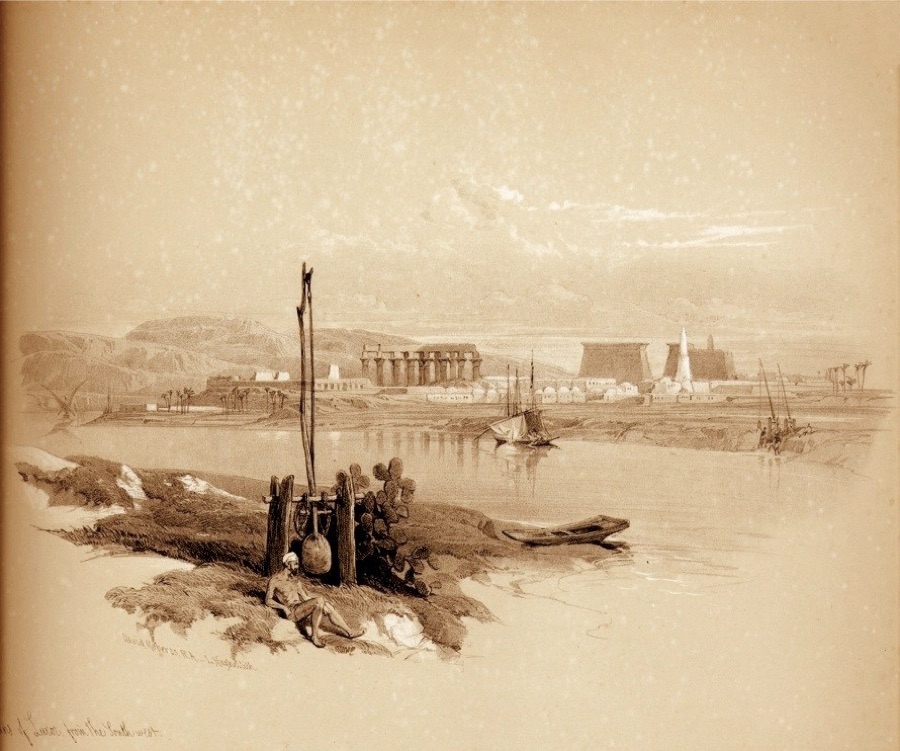RUINS OF LUXOR FROM THE SOUTH-WEST.
THIS view of the Temple of Luxor is seen by the traveller as he descends the Nile, and is taken from one of the fertile islands which lie in the river nearly opposite to the Temple. On this side of the city lay the port of Thebes, formerly protected by a mole; and, whatever may have been the splendour and power of Remeses the Great, a fleet could in a very small degree have contributed to its acquisition or its defence. The imagination may fill the land with pictures of the life and activity of its crowded and warlike inhabitants; but there could have been no navy on its waters, nor any vessels, except the boats which ferried the inhabitants from shore to shore, or gay pleasure-seekers in their splendid craft, or the grave but grand processions of the great dead of the city when taken to their resting-place in the Bibán El Malook, or the necropolis of the priesthood, situated amidst the Lybian hills, which are seen in this sketch. On this side of the propylon is seen the minaret of the mosque of a celebrated Sheikh, named Abd Alhajaj, amidst structures that have braved more than thirty centuries, and looks like ill-assorted company; but not quite so outrageous in its contrast as the vile mud-huts that form “the Arab village of Luqsor, which has kennelled itself in the lordly halls of the Pharaohs.” In the foreground of the sketch is a shadoof, one of the simple means of rising water from the Nile for irrigation, seen everywhere on its banks, but which is a source of excessive labour and waste of energy to the Fellahs, who are employed to work them.
Bonomi’s Notes. Wathen’s Arts and Antiquities of Egypt.


